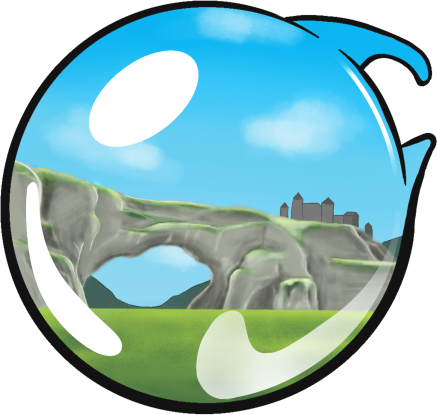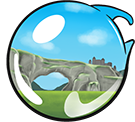Catoblepas: Difference between revisions
(added) |
No edit summary |
||
| (One intermediate revision by one other user not shown) | |||
| Line 1: | Line 1: | ||
[[ | {{Infobox Monster | ||
| image = | |||
| | | image caption = Catoblepas | ||
| job = [[Warrior]] | |||
| family = Dhalmels | |||
| family2 = | |||
| | | family3 = | ||
| crystal = Earth | |||
| | | weaknesses = {{element|Lightning}} {{element|Wind}} | ||
| resistances = | |||
| | | immunities = | ||
| absorbs = | |||
| type = | |||
| subtype = | |||
| tier = | |||
| title obtained = | |||
}} | |||
{| class="mobs horizon-table table-xl" | |||
! Zone || Level || Drops || Steal || Spawns || Notes | ! Zone || Level || Drops || Steal || Spawns || Notes | ||
|- | |- | ||
|[[Bibiki Bay]] | |||
|align="center"| | |align="center"|79 - 81 | ||
| | | | ||
*[[Catoblepas Hide]] {{Drop Rate| | *[[Catoblepas Hide]] {{Hxi Drop Rate|asb=100/1000|0|0}} | ||
*[[Dhalmel Meat]] | *[[Dhalmel Meat]] (up to x2) {{Hxi Drop Rate|asb=240/1000|0|0}} | ||
*[[Giant Femur]] {{Drop Rate| | *[[Giant Femur]] {{Hxi Drop Rate|asb=50/1000|0|0}} | ||
| | | | ||
|align="center"|9<br>''Respawn:5 minutes'' | |||
|align="center"|L, Sc<br>{{HPMP|low hp=|low mp=none}} | |||
|align="center"|9 | |||
|align="center"|L, Sc | |||
|- | |- | ||
!colspan="6"| | |||
{{Monster Notes}} | {{Monster Notes}} | ||
|} | |} | ||
==HorizonXI Changes{{changes}}== | |||
*Level Range is now 79 - 81 vs 76-77 | |||
== Historical Background == | == Historical Background == | ||
A legendary animal from Ethiopia first described by Pliny the Elder in his travels. It had the body of a buffalo and the head of a hog. Its stare or its breath, depending on the account, could either turn people into stone or kill them instantly. It was considered a sluggish animal and had a heavy head, with its face always looking down at the ground. Claudius Aelianus, a Roman author, who wrote ''On the Nature of Animals'' described the Catoblepas as a medium-sized herbivore (roughly the size of a bull) with a heavy mane, beady eyes and shaggy eyebrows. He depicted the animal as having a poison breath, which derived from eating poisonous vegetation. It is believed that both figures were describing a real animal, the gnu, a type of wildebeest. Its name means "downward-looking" in Greek. | A legendary animal from Ethiopia first described by Pliny the Elder in his travels. It had the body of a buffalo and the head of a hog. Its stare or its breath, depending on the account, could either turn people into stone or kill them instantly. It was considered a sluggish animal and had a heavy head, with its face always looking down at the ground. Claudius Aelianus, a Roman author, who wrote ''On the Nature of Animals'' described the Catoblepas as a medium-sized herbivore (roughly the size of a bull) with a heavy mane, beady eyes and shaggy eyebrows. He depicted the animal as having a poison breath, which derived from eating poisonous vegetation. It is believed that both figures were describing a real animal, the gnu, a type of wildebeest. Its name means "downward-looking" in Greek. | ||
Latest revision as of 00:08, 9 March 2024
| This article is missing a picture of the monster, NM, or pet. You can help by adding it. |
| Zone | Level | Drops | Steal | Spawns | Notes |
|---|---|---|---|---|---|
| Bibiki Bay | 79 - 81 |
|
9 Respawn:5 minutes |
L, Sc ??? HP | |
|
HP = Detects Low HP; M = Detects Magic; Sc = Follows by Scent; T(S) = True-sight; T(H) = True-hearing JA = Detects job abilities; WS = Detects weaponskills; Z(D) = Asleep in Daytime; Z(N) = Asleep at Nighttime; A(R) = Aggressive to Reive participants | |||||
HorizonXI Changes
- Level Range is now 79 - 81 vs 76-77
Historical Background
A legendary animal from Ethiopia first described by Pliny the Elder in his travels. It had the body of a buffalo and the head of a hog. Its stare or its breath, depending on the account, could either turn people into stone or kill them instantly. It was considered a sluggish animal and had a heavy head, with its face always looking down at the ground. Claudius Aelianus, a Roman author, who wrote On the Nature of Animals described the Catoblepas as a medium-sized herbivore (roughly the size of a bull) with a heavy mane, beady eyes and shaggy eyebrows. He depicted the animal as having a poison breath, which derived from eating poisonous vegetation. It is believed that both figures were describing a real animal, the gnu, a type of wildebeest. Its name means "downward-looking" in Greek.
